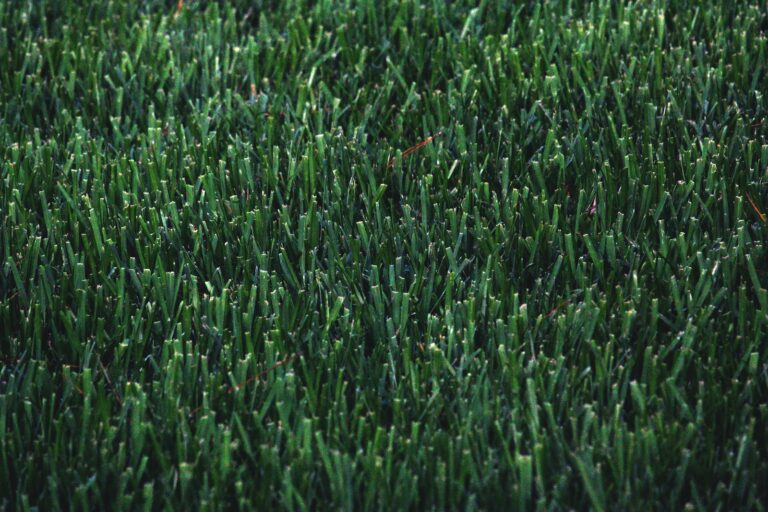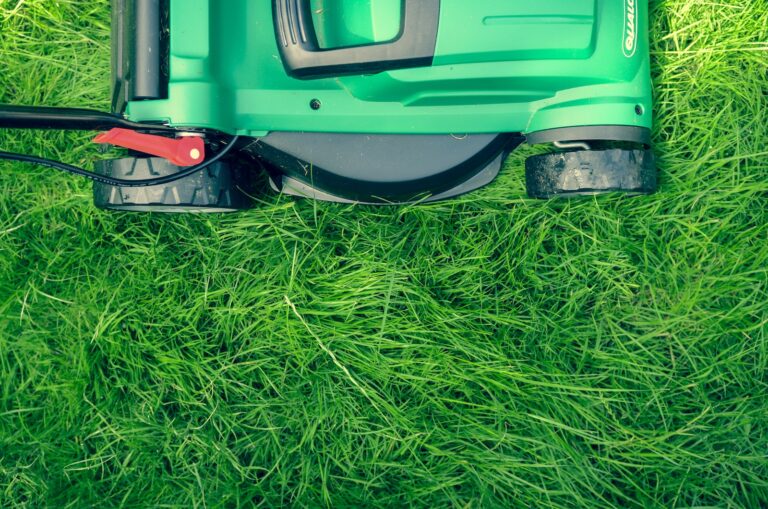The Ultimate Guide to Lawn Mowing: Techniques, Tips and Tricks

Are you tired of spending hours mowing your lawn only to end up with uneven, patchy grass? Look no further than our ultimate guide to lawn mowing techniques, tips and tricks! Whether you’re a seasoned pro or just starting out, this post has everything you need to know to achieve that perfectly manicured lawn.
From the best equipment and maintenance practices to strategies for tackling difficult terrain, we’ve got you covered. Get ready to say goodbye to frustrating mowing experiences and hello to a beautiful yard that will be the envy of your neighbors!
How to Choose the Right Mower for Your Lawn
When it comes to choosing a lawn mower, there are a few things you need to take into consideration. The size of your lawn is obviously the first thing, as you need to make sure the mower you choose is big enough to cover the whole area. If you have a small lawn, then a push mower would be fine, but if you have a larger lawn then you might want to consider getting a riding mower.
The next thing to think about is the type of grass you have. If you have a very short, trimmed lawn then any type of mower will do just fine. However, if your grass is longer then you will need to get a mower with a higher setting. This way, you can avoid scalping your grass and causing damage.
Another important factor is how often you plan on using your mower. If you only plan on using it once a week or so, then an electric mower would be perfectly fine. However, if you plan on using it more often then you might want to get a gas-powered mower so that it will be more durable and last longer.
Take into consideration the price of the mower. Mowers can range in price from very affordable to quite expensive. It all depends on what features and brand you want. Do some research online or in store before making your final purchase so that you know you are getting the best deal possible.
Basic Mowing Skills, Techniques and Tips
It’s finally warm enough to break out the lawn mower and get your grass looking green and healthy! Mowing your lawn may seem like a simple task, but there is a right and wrong way to do it. Keep reading for basic mowing skills, techniques and tips that will have your lawn looking its best in no time.
When to mow: The timing of your mows is important. You should generally mow when the grass is dry – morning is usually the best time. Cutting wet grass can cause clumping and unevenness. Additionally, you should never cut more than 1/3 of the height of the grass at one time. This can shock the grass and damage it.
How to mow: Start by setting the blade height on your lawnmower. The general rule is to never cut more than 1/3 of the height of the grass at one time. Next, make sure you’re using a sharp blade – a dull blade will tear the grass rather than cut it cleanly, damaging your lawn. Be sure to push, don’t pull, the lawnmower – this will give you a cleaner cut.
Techniques: There are a few different techniques you can use to get an even cut and beautiful striped pattern in your lawn. First, make sure you’re mowing in a straight line – back and forth across the lawn (not around in circles). Second, alternate directions with each row – for example, one row mow from north to south and the next row mow from east to west. This will give you a more even result and help create stripes in your lawn.
Tips: Make sure you’re mowing regularly – frequency depends on the type of grass you have and your climate, but usually about once every two weeks is good. Additionally, be sure to clean up any clippings as you go – not only does this keep your lawn looking neat, it’s also better for the grass as the clippings can smother it. Finally, use a grass catcher if possible – this will help keep the clippings out of flower beds and other non-grass areas.
Pre and Post-Mowing Maintenance Tips

As you probably know, lawn mowing is a key part of keeping your yard looking its best. But did you know that there are some things you should do before and after you mow, in order to keep your lawn healthy and attractive? Here are some pre and post-mowing maintenance tips to follow:
Before You Mow:
1] Make sure your lawn mower is in good working condition. This includes sharpening the blades and ensuring that all parts are properly lubricated.
2] Raise the blade on your lawn mower before you start mowing. This will help avoid scalping the grass, which can damage the health of your lawn.
3] Test drive your lawn mower on a small section of grass to make sure it’s working properly before you start mowing the whole yard.
4] If possible, try to mow when the grass is dry. Wet grass can clump up under the wheels of your lawn mower, making it more difficult to push and leading to an uneven cut.
After You Mow:
1] Once you’re finished mowing, rake up any clippings as soon as possible. Allowing the clippings to sit and decompose on your lawn can cause damage to the grass and leave behind an unsightly mess.
2] Remove any large rocks or sticks that may have been rolled up by the mower blades. These can damage the blades on your lawn mower over time, so it’s best to get rid of them quickly.
3] Check around your driveway or sidewalks where edges of your yard meet asphalt or concrete to make sure there isn’t a build up of grass debris that needs to be cleared away.
4] Finally, make sure you put away your lawn mower in a safe place where it won’t be tampered with or exposed to the elements.
Selecting the Correct Blades for Your Lawn

The blades on your lawn mower are one of the most important parts of the machine. Without them, your mower would be useless. But with so many different types and sizes of blades available, how do you know which ones are right for your lawn?
Here are a few things to keep in mind when selecting the correct blades for your lawn mower:
1] The size of your lawn – The size of your lawn will determine the size of the blade you need. If you have a large lawn, you’ll need a larger blade. Conversely, if you have a small lawn, you’ll need a smaller blade.
2] The type of grass – The type of grass you have will also dictate the type of blade you need. For example, if you have a thick, dense turf, you’ll need a blade that can handle that type of grass. Conversely, if you have a very fine-textured turf, you’ll need a softer blade.
3] The condition of your lawn – If your lawn is in good condition, then you won’t need as heavy duty of a blade as someone whose lawn is in poor condition. A blade that is too heavy duty will damage healthy turfgrass, so it’s important to choose one that is appropriate for the condition of your lawn.
4] Your personal preference – Ultimately, the best way to choose the right blades for your lawn mower is to experiment and find what works best for you and your lawn. You may find that one type of blade works better than another, or that different blades work better for different conditions.
By taking all of these factors into consideration, you can ensure you select the right blades for your lawn mower and keep your lawn looking its best.
What Type of Lawns Need Special Care?
If you have a special type of lawn, such as one made of Bermuda grass or zoysia, you will need to take special care when mowing. These types of lawns are very sensitive to changing weather conditions, so it is important to mow them regularly and at the proper height.
Bermuda grass and zoysia lawns should be mowed to a height of 1 to 2 inches. Mowing at this height will help the grasses stay green and prevent them from getting damaged by the sun or wind. It is also important to mow these types of lawns frequently, at least once a week during the growing season.
If you have a Bermuda grass or zoysia lawn, it is also important to use a sharp blade when mowing. A dull blade can damage the grasses and cause them to turn brown. Be sure to sharpen your blade regularly to keep your lawn looking its best.
Should You Consider DIY or Hiring a Professional Service?
When it comes to lawn mowing, there are two main options: DIY or hiring a professional service. So, which is the better option for you?
There are a few factors to consider when making your decision. If you have a large lawn, it may be more cost-effective to hire a professional service. Professional lawn care services also have the experience and equipment to get the job done quickly and efficiently.
On the other hand, if you have a small lawn or you simply enjoy working outdoors, DIY lawn mowing can be a fun and rewarding experience. Plus, it’s usually more affordable than hiring a professional service.
Ultimately, the decision of whether to DIY or hire a professional lawn care service is up to you. Consider your budget, time constraints and personal preferences before making your decision.
Alternatives to Traditional Mowing Methods (Vertical Mow, Solar Power etc.)
If you’re looking for alternatives to traditional mowing methods, there are a few options available. Vertical mowing, solar power, and electric mowers are all viable options that can save you time and money.
Vertical mowing is a great alternative to traditional mowing because it requires less energy and produces less noise. Solar power is another great option because it’s renewable and environmentally friendly. Electric mowers are also a good choice because they’re quiet and require very little maintenance.
Conclusion
Mowing your lawn can be a daunting task, with the wrong technique you won’t get the desired result. Our ultimate guide to lawn mowing will provide you with tips and tricks to make sure that your lawn looks beautiful after every mow.
With these techniques and special attention dedicated to different regions of your lawn, we are certain that you will have an amazing looking green carpet at all times. If ever in doubt remember this essential advice: Start slow, do not forget safety precautions and never trust one size fits all guidelines!

James is a passionate writer and gardener with years of experience in home gardening. He is the author of several articles and blog posts on HomeGardenBlog.com, a platform where he shares his expertise and love for plants and gardening with the world.







